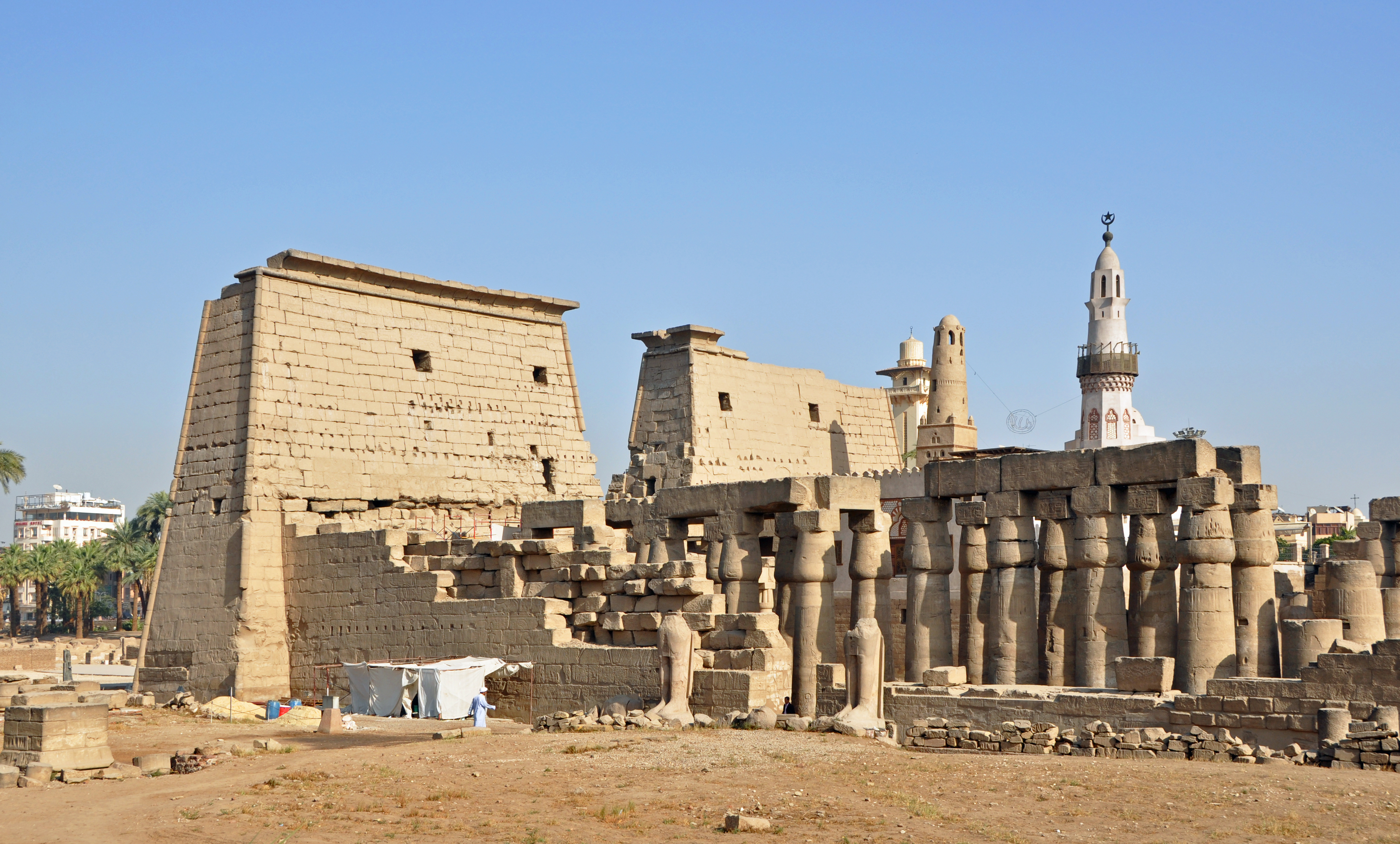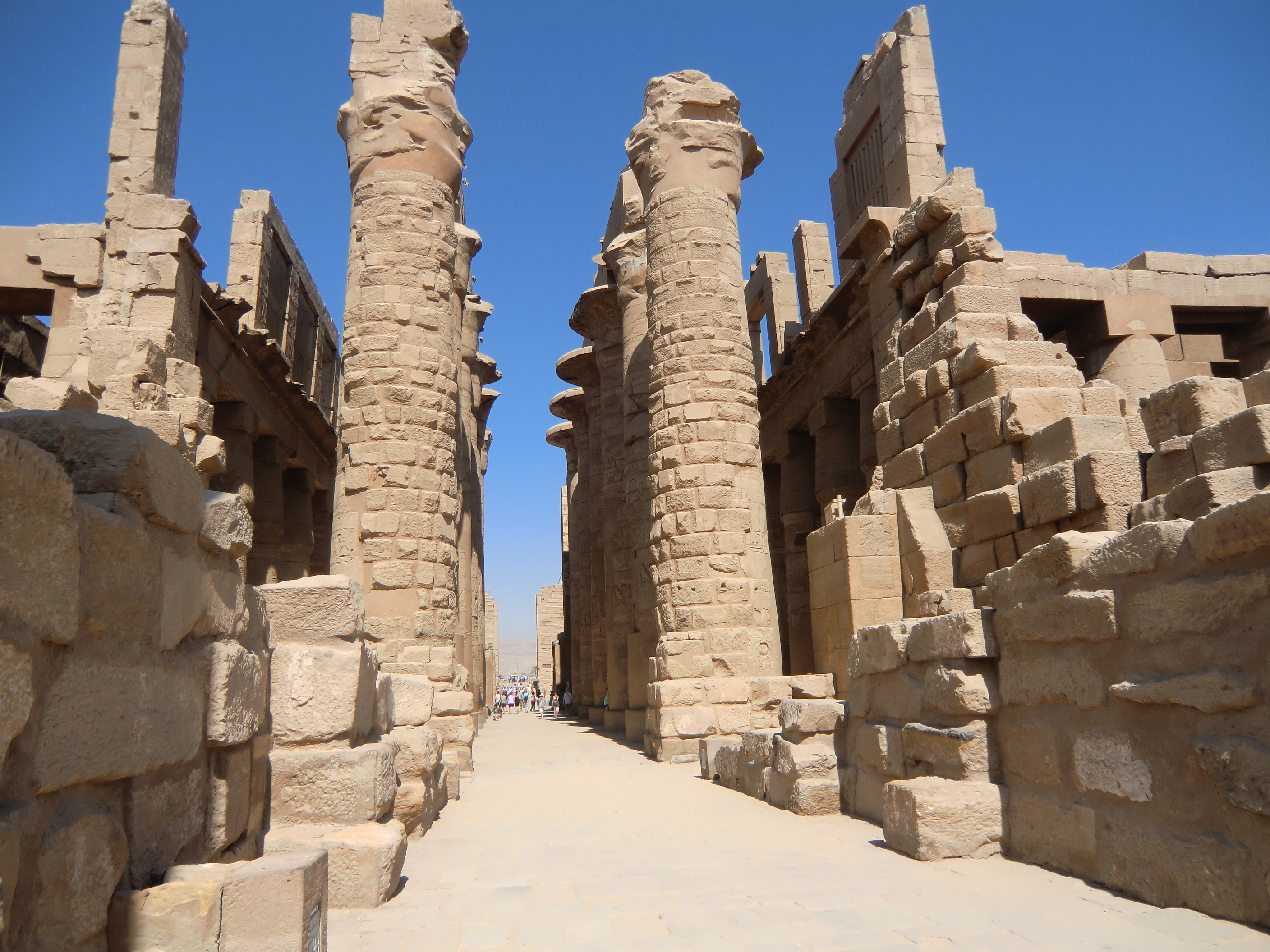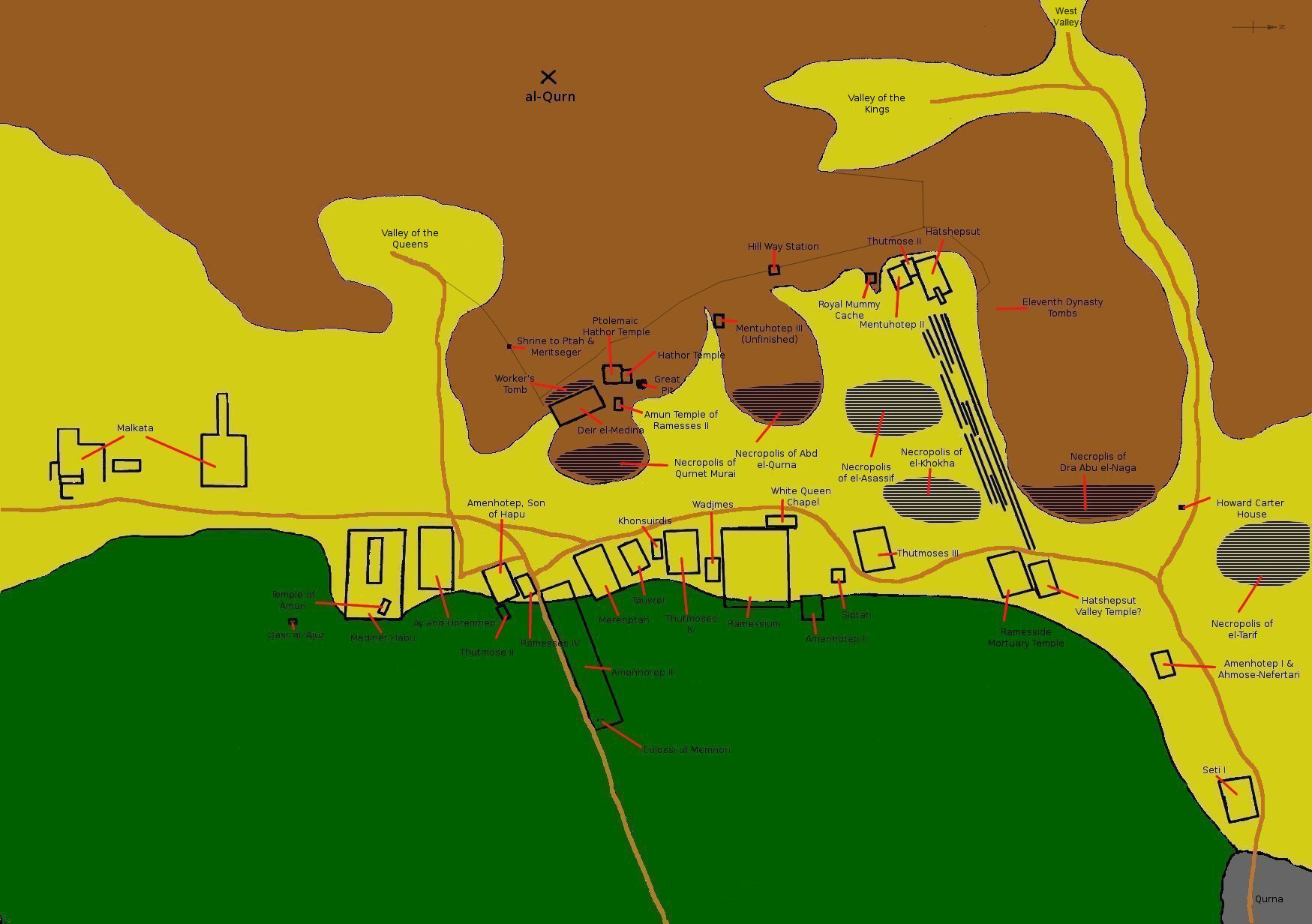|
Beautiful Festival Of The Valley
The Beautiful Festival of the Valley ( Egyptian: ''heb nefer en inet''; ar, عيد الوادي الجميل, Eid al-Wadi al-Jamil) was an ancient Egyptian festival, celebrated annually in Thebes (Luxor), during the Middle Kingdom period and later. The sacred barques of the wind deity Amun-Re, his consort Mut and son Khonsu left the temple at Karnak in order to visit the funerary temples of deceased royalty on the West Bank and their shrines in the Theban Necropolis. Celebration The Beautiful Festival of the Valley, or ''heb nefer en inet'' in Egyptian, was a celebration of the dead. It could be more ancient than the Opet Festival as it can be traced back to the Middle Kingdom. It was said to be held as a remembrance of the dead, from the beginning of the Middle Kingdom. However, when joined with the Festival of Opet, the holy procession became the main event of the liturgical calendar of Thebes. The annual festival was held at the New Moon of Month Two. This was the summe ... [...More Info...] [...Related Items...] OR: [Wikipedia] [Google] [Baidu] |
Tomb Of Nakht (6)
The Theban Tomb TT52 is located in Sheikh Abd el-Qurna, part of the Theban Necropolis, on the west bank of the Nile, opposite to Luxor. It is the burial place of Nakht, an ancient Egyptian official who held the position of a scribe and astronomer of Amun, probably during the reign of Thutmose IV (1401 BC – 1391 BC or 1397 BC – 1388 BC) during the Eighteenth Dynasty, the first dynasty of the New Kingdom. Architecture The tomb architecture and decoration conforms to the standard design of Theban tombs of the New Kingdom by using such scenes that are commonly found in contemporary tombs. Some of these decorations display differences from scenes found in Old Kingdom mastabas of Memphis, where one of the principal functions of the tomb was to ensure magical sustenance for the ka, whereas in the New Kingdom tombs, the primary function was to identify oneself on the tomb walls. The tomb has the typical T-shaped architectural design that was common for non-royal Theban tombs ... [...More Info...] [...Related Items...] OR: [Wikipedia] [Google] [Baidu] |
Egyptian Language
The Egyptian language or Ancient Egyptian ( ) is a dead Afro-Asiatic language that was spoken in ancient Egypt. It is known today from a large corpus of surviving texts which were made accessible to the modern world following the decipherment of the ancient Egyptian scripts in the early 19th century. Egyptian is one of the earliest written languages, first being recorded in the hieroglyphic script in the late 4th millennium BC. It is also the longest-attested human language, with a written record spanning over 4000 years. Its classical form is known as Middle Egyptian, the vernacular of the Middle Kingdom of Egypt which remained the literary language of Egypt until the Roman period. By the time of classical antiquity the spoken language had evolved into Demotic, and by the Roman era it had diversified into the Coptic dialects. These were eventually supplanted by Arabic after the Muslim conquest of Egypt, although Bohairic Coptic remains in use as the liturgical lan ... [...More Info...] [...Related Items...] OR: [Wikipedia] [Google] [Baidu] |
Thebes, Egypt
, image = Decorated pillars of the temple at Karnac, Thebes, Egypt. Co Wellcome V0049316.jpg , alt = , caption = Pillars of the Great Hypostyle Hall, in '' The Holy Land, Syria, Idumea, Arabia, Egypt, and Nubia'' , map_type = Egypt , map_alt = , map_size = , relief = yes , coordinates = , location = Luxor, Luxor Governorate, Egypt , region = Upper Egypt , type = Settlement , part_of = , length = , width = , area = , height = , builder = , material = , built = , abandoned = , epochs = , cultures = , dependency_of = , occupants = , event = , excavations = , archaeologists = , condition = , ownership = , management = , public_access = , website = , notes = , designation1 = WHS , designation1_offname = Ancient T ... [...More Info...] [...Related Items...] OR: [Wikipedia] [Google] [Baidu] |
Luxor
Luxor ( ar, الأقصر, al-ʾuqṣur, lit=the palaces) is a modern city in Upper (southern) Egypt which includes the site of the Ancient Egyptian city of ''Thebes''. Luxor has frequently been characterized as the "world's greatest open-air museum", as the ruins of the Egyptian temple complexes at Karnak and Luxor stand within the modern city. Immediately opposite, across the River Nile, lie the monuments, temples and tombs of the west bank Theban Necropolis, which includes the Valley of the Kings and Valley of the Queens. Thousands of tourists from all around the world arrive annually to visit Luxor's monuments, contributing greatly to the economy of the modern city. The population of Luxor is 422,407 (2021), with an area of approximately . It is the capital of Luxor Governorate. It is among the oldest inhabited cities in the world. Etymology The name ''Luxor'' ( ar, الأقصر, al-ʾuqṣur, lit=the palace, pronounced , , Upper Egyptian: ) derives from the Ara ... [...More Info...] [...Related Items...] OR: [Wikipedia] [Google] [Baidu] |
Middle Kingdom Of Egypt
The Middle Kingdom of Egypt (also known as The Period of Reunification) is the period in the history of ancient Egypt following a period of political division known as the First Intermediate Period. The Middle Kingdom lasted from approximately 2040 to 1782 BC, stretching from the reunification of Egypt under the reign of Mentuhotep II in the Eleventh Dynasty to the end of the Twelfth Dynasty. The kings of the Eleventh Dynasty ruled from Thebes and the kings of the Twelfth Dynasty ruled from el-Lisht. The concept of the Middle Kingdom as one of three golden ages was coined in 1845 by German Egyptologist Baron von Bunsen, and its definition evolved significantly throughout the 19th and 20th centuries. Some scholars also include the Thirteenth Dynasty of Egypt wholly into this period, in which case the Middle Kingdom would end around 1650 BC, while others only include it until Merneferre Ay around 1700 BC, last king of this dynasty to be attested in both Upper and Lower Egy ... [...More Info...] [...Related Items...] OR: [Wikipedia] [Google] [Baidu] |
Amun-Re
Amun (; also ''Amon'', ''Ammon'', ''Amen''; egy, jmn, reconstructed as (Old Egyptian and early Middle Egyptian) → (later Middle Egyptian) → (Late Egyptian), cop, Ⲁⲙⲟⲩⲛ, Amoun) romanized: ʾmn) was a major ancient Egyptian deity who appears as a member of the Hermopolitan Ogdoad. Amun was attested from the Old Kingdom together with his wife Amunet. With the 11th Dynasty ( 21st century BC), Amun rose to the position of patron deity of Thebes by replacing Montu. After the rebellion of Thebes against the Hyksos and with the rule of Ahmose I (16th century BC), Amun acquired national importance, expressed in his fusion with the Sun god, Ra, as Amun-Ra (alternatively spelled Amon-Ra or Amun-Re). Amun-Ra retained chief importance in the Egyptian pantheon throughout the New Kingdom (with the exception of the " Atenist heresy" under Akhenaten). Amun-Ra in this period (16th to 11th centuries BC) held the position of transcendental, self-created creator deity " ... [...More Info...] [...Related Items...] OR: [Wikipedia] [Google] [Baidu] |
Khonsu
Khonsu ( egy, ḫnsw; also transliterated Chonsu, Khensu, Khons, Chons or Khonshu; cop, Ϣⲟⲛⲥ, Shons) is the ancient Egyptian god of the Moon. His name means "traveller", and this may relate to the perceived nightly travel of the Moon across the sky. Along with Thoth he marked the passage of time. Khonsu was instrumental in the creation of new life in all living creatures. At Thebes he formed part of a family triad (the " Theban Triad") with Mut as his mother and Amun his father. Mythology Khonsu's name reflects the fact that the Moon (referred to as Iah in Egyptian) travels across the night sky, for it means "traveller," and he also had the titles "Embracer," "Pathfinder," "Defender," and "healer," as he was thought to watch over those who travel at night. As the god of light in the night, Khonsu was invoked to protect against wild animals, and aid with healing. It was said that when Khonsu caused the crescent moon to shine, women conceived, cattle became fert ... [...More Info...] [...Related Items...] OR: [Wikipedia] [Google] [Baidu] |
Karnak
The Karnak Temple Complex, commonly known as Karnak (, which was originally derived from ar, خورنق ''Khurnaq'' "fortified village"), comprises a vast mix of decayed temples, pylons, chapels, and other buildings near Luxor, Egypt. Construction at the complex began during the reign of Senusret I (reigned 1971–1926 BCE) in the Middle Kingdom (around 2000–1700 BCE) and continued into the Ptolemaic Kingdom (305–30 BCE), although most of the extant buildings date from the New Kingdom. The area around Karnak was the ancient Egyptian ''Ipet-isut'' ("The Most Selected of Places") and the main place of worship of the 18th Dynastic Theban Triad, with the god Amun as its head. It is part of the monumental city of Thebes, and in 1979 it was inscribed on the UNESCO World Heritage List along with the rest of the city. The Karnak complex gives its name to the nearby, and partly surrounded, modern village of El-Karnak, north of Luxor. Overview The complex is a vast open sit ... [...More Info...] [...Related Items...] OR: [Wikipedia] [Google] [Baidu] |
Theban Necropolis
The Theban Necropolis is a necropolis on the west bank of the Nile, opposite Thebes (Luxor) in Upper Egypt. It was used for ritual burials for much of the Pharaonic period, especially during the New Kingdom. Mortuary temples * Deir el-Bahri ** Mortuary temple of Hatshepsut ** Mortuary temple of Mentuhotep II ** Mortuary temple of Thutmose III * Medinet Habu ** Mortuary temple and palace of Ramesses III ** Mortuary Temple of Ay & Horemheb * Mortuary Temple of Amenhotep III ** Colossi of Memnon * Mortuary Temple of Merneptah * Mortuary Temple of Ramesses IV * Mortuary Temple of Thutmose IV * Mortuary Temple of Thutmose III * Mortuary Temple of Twosret * Temple of Nebwenenef * Qurna ** Mortuary Temple of Seti I * Mortuary Temple of Amenhotep II * Ramesseum (Mortuary Temple of Ramesses II) Royal Necropolis * Valley of the Kings (Modern: "''Wadi el-Muluk''") * Valley of the Queens (Modern: "''Biban el-Harim''") * Royal Cache * Bab el-Gasus Necropolis * Deir el-Medina ** ... [...More Info...] [...Related Items...] OR: [Wikipedia] [Google] [Baidu] |
Opet Festival
The Opet Festival (the Beautiful Festival of Opet/Opeth/''heb nefer en Ipet'') was an annual Ancient Egyptian Festival celebrated in Thebes (Luxor), especially in the New Kingdom and later periods, during the second month of the season of Akhet, the flooding of the Nile. The festival was celebrated to promote the Fertility of Amun-Re and the Pharaoh, who was also believed to be the spiritual offspring of Amun-Re; the Son/Daughter of Amun-Re. John Coleman Darnell argues that “Opet began on II Akhet 15 under Thutmose III and lasted 11 days (Sethe 1907: 824, line 10); by the beginning of the reign of Ramesses III, the festival stretched over 24 days.” The Festival included a ritual procession of the Barque (a ceremonial boat that was used to transport statues of gods and deities) of the cult statue of “Amun-Re, supreme god, his wife, Mut, and his son, Khons.” This procession carried the statue for 2 km from Karnak Temple to “Luxor Temple, destination of the Opet Fea ... [...More Info...] [...Related Items...] OR: [Wikipedia] [Google] [Baidu] |
Shemu
The Season of the Harvest or Low Water was the third and final season of the lunar and civil Egyptian calendars. It fell after the Season of the Emergence (') and before the spiritually dangerous intercalary month ('), after which the New Year's festivities began the Season of the Inundation (''Ꜣḫt''). In the modern Coptic calendar it falls between Tobi 11 and Paoni 11. Names The Season of the Harvest was known to the Egyptians themselves as "LowWater" ( egy, Šmw), variously transliterated as Shemu or Shomu, in reference to the state of the Nile before the beginning of its annual flood. It is also referred to as Summer or the Dry Season. Lunar calendar In the lunar calendar, the intercalary month was added as needed to maintain the heliacal rising of Sirius in the fourth month of this season. This meant that the Season of the Harvest usually lasted from May to September. Because the precise timing of the flood varied, the months of "Low Water" no longer precis ... [...More Info...] [...Related Items...] OR: [Wikipedia] [Google] [Baidu] |



_(2865505031).jpg)

